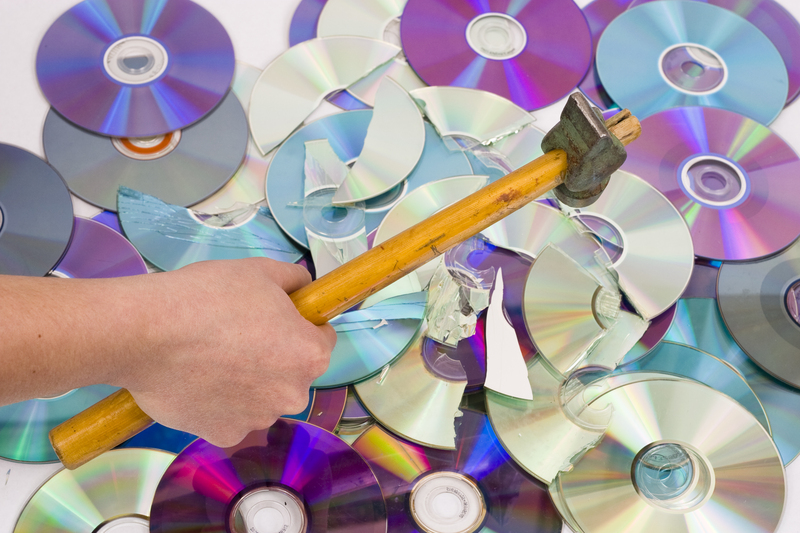What Everyone Should Know About Safe PPE Waste Disposal
In today's health-conscious world, personal protective equipment (PPE) like masks, gloves, face shields, and gowns are ubiquitous in healthcare facilities, workplaces, and even our homes. While PPE is crucial for protection, improper PPE waste disposal can create severe hazards for public health and the environment. This article covers all you need to know about safe PPE waste disposal, its importance, environmental impact, practical disposal methods, and compliance with legal guidelines.
Why Is Proper PPE Waste Disposal Important?
- Preventing the Spread of Infectious Diseases: Used PPE may harbor pathogens, and careless disposal can transmit infections to waste handlers, the public, and wildlife.
- Protecting the Environment: Many PPE items are made of plastics that are not biodegradable. If not managed properly, they contribute to pollution and harm marine and terrestrial life.
- Complying with Regulations: Local and international laws mandate safe PPE waste management to protect public health and ecosystems.
In short, understanding and implementing safe PPE waste disposal practices safeguards not just human health but the planet's well-being.

Types of PPE and Their Environmental Impact
It's essential to understand the diverse types of PPE commonly in use and their typical disposal routes.
Common Types of PPE
- Masks (surgical masks, N95 respirators)
- Gloves (latex, nitrile, vinyl)
- Face shields and goggles
- Gowns and coveralls
- Head and shoe covers
Most PPE contains plastics such as polypropylene and polyvinyl chloride, which are not easily recycled and are resistant to decomposition. The surge in single-use PPE since the COVID-19 pandemic has intensified the challenge, as billions of items are disposed of monthly worldwide.
Environmental Hazards of Improper PPE Waste Management
- Plastic Pollution: Discarded masks and gloves are frequent finds on roadsides, in rivers, and oceans, where they break down into dangerous microplastics.
- Wildlife Threats: Animals often mistake PPE items for food or become entangled, leading to injury or death.
- Clogged Drainage Systems: PPE waste can block waterways and sewage systems, increasing flood risks and breeding grounds for pests.
Therefore, the environmental impact of PPE waste is significant and necessitates responsible disposal protocols.
Legal Requirements for PPE Waste Disposal
PPE waste is often categorized as medical or infectious waste, especially when used in healthcare settings. Regulations differ by country but share some universal principles.
Key Legal Guidelines
- Segregation: PPE waste must be separated from general waste streams at the point of origin.
- Labeling and Storage: Containers for infectious or contaminated PPE waste must be labeled and stored securely.
- Transport and Disposal: Specialized services are required for collecting and treating hazardous PPE waste safely.
- Documentation: Facilities must maintain disposal records in compliance with public health regulations.
Individuals and organizations must familiarize themselves with their local rules on PPE waste disposal to avoid legal consequences and ensure safety.
Safe PPE Waste Disposal Practices at Work and Home
Whether you are at work, especially in healthcare or high-risk environments, or at home, you can implement safe PPE waste handling procedures to minimize risks.
Safe Disposal in Healthcare and Occupational Settings
- Use Designated Bins: Facilities should provide color-coded, clearly labeled bins for PPE waste, such as yellow or red containers lined with strong plastic bags.
- Avoid Overfilling: Bins should be closed securely and replaced before they become full to prevent spillage.
- Follow Hand Hygiene: After handling PPE waste, wash hands thoroughly with soap and water or use an alcohol-based hand sanitizer.
- Regular Collection: Arrange for frequent collection and safe transportation by licensed medical waste management companies.
How to Safely Dispose of PPE at Home
- Bag PPE Separately: Place used masks, gloves, and other PPE in a separate plastic bag. Tie the bag securely before placing in the household trash bin.
- Do Not Recycle: Used PPE is contaminated and should never be put in recycling bins.
- Hand Hygiene: Always wash your hands after handling used PPE and disposal bags.
- Avoid Littering: Never dispose of PPE in public areas, streets, or waterways.
Tip: If you are quarantined or ill, double-bagging and marking the waste as "infectious" helps protect waste collection staff.
Advanced PPE Waste Management Solutions
PPE waste solutions are constantly evolving, with new technologies and strategies aiming to reduce environmental impact and improve safety.
Innovative Disposal and Recycling Initiatives
- Incineration: High-temperature burning in controlled environments reduces the risk of pathogen transmission but must be managed to minimize harmful emissions.
- Autoclaving: Steam sterilization is another effective treatment before PPE waste is sent to landfills.
- Plasma Pyrolysis: Cutting-edge technology that vaporizes waste at high temperatures, leaving minimal residue.
- PPE Recycling Programs: Some manufacturers and organizations are developing systems to recycle PPE waste into new products, such as construction materials or energy.
While these innovations are promising, participation and proper sorting by users are crucial for their effectiveness.
Best Practices for Individuals and Organizations
Both individuals and organizations have a role to play in PPE waste safety. Here are some best practices to follow:
For Individuals
- Only use what you need: Avoid hoarding or overusing single-use PPE.
- Educate your household: Make sure everyone knows how to dispose of PPE waste responsibly.
- Correct disposal: Always use a separate bag for PPE and ensure it is tightly sealed.
For Businesses and Healthcare Facilities
- Employee training: Conduct regular training sessions on PPE usage and waste disposal protocols.
- Provide supplies: Ensure that bins, liners, and PPE safety signage are always accessible.
- Appoint a PPE waste manager: Assign responsibility for monitoring and improving waste management procedures.
- Review compliance: Audit your facility's waste management system regularly to ensure adherence to regulations.
What Should You Do If You Encounter Improper PPE Disposal?
Despite best efforts, you may come across improperly discarded PPE in public places or workplaces.
Recommended Actions
- Report: Inform local public health authorities, municipal waste departments, or workplace supervisors.
- Do not touch: Avoid direct contact unless you have the right PPE and follow proper safety measures.
- Raise awareness: Encourage others in your community or workplace to follow PPE waste safety protocols.

Frequently Asked Questions About PPE Waste Disposal
Can PPE be recycled?
Most current household and municipal recycling systems do not process contaminated PPE due to health and contamination risks. Some specialized recycling programs accept certain types of PPE, mainly from healthcare or industrial sources, provided the items are treated and decontaminated.
What should I do with used PPE if I am self-isolating due to illness?
Double-bag all used PPE and tissues, seal them securely, and set them aside for at least 72 hours before placing them in household waste, following guidance from local health authorities.
What risks are associated with unsafe PPE disposal?
- Increased spread of infections like COVID-19, hepatitis, or other contagious diseases
- Contamination of water sources, soil, and food chain
- Harm to sanitation workers, waste handlers, and the general public
- Legal liability for individuals and organizations
Are there alternatives to single-use PPE?
Whenever possible, use reusable cloth masks and gowns that can be laundered after use. However, always follow the advice of health professionals based on your exposure risk and situation.
Conclusion: Safe PPE Waste Disposal Protects Everyone
In conclusion, PPE waste disposal safety is a shared responsibility that goes beyond individual and organizational duty. Failing to dispose of PPE waste safely not only endangers health workers and waste handlers but also threatens entire communities and the ecosystem.
- Practice source segregation: Keep PPE separate from other wastes.
- Use correct containers and labels: Minimize confusion and accidents.
- Engage with certified waste handlers: Ensure safe and legal disposal.
- Stay informed: Keep up with local regulations and best practices.
By prioritizing safe PPE waste disposal, you protect public health, the environment, and the workers who are essential in keeping our societies functioning, especially during public health crises. Make it your duty to follow the highest standards of PPE waste safety every time.
